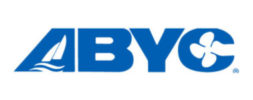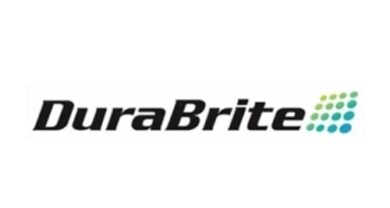Marine Market Focus – Steering & Controls: Technological advances
Advances in technology are allowing marine controls and steering systems to become increasingly sophisticated. Systems are moving from mechanical to electronic and from electronic to digital, with more and more customization available at each level. Technological advances have also allowed control communications to be centralized.
“Everything’s going electronic,” said Jack Kolbet, head of Kolbet Manufacturing.
That includes his controls manufacturing company, which makes traditional mechanical controls in addition to electronic ones. Electronic controls are cheaper and more versatile than their pneumatic, or air-powered, counterparts.
“[Electronic controls] are easy to install, but can be troublesome if you’re not familiar with them,” Kolbet said.
Their growing presence in the market place won’t allow electronic components to be unfamiliar for long, particularly if boat manufacturers have anything to say about it, according to some controls and steering manufacturers.
As the marine controls and steering industry is often a “push” market rather than a “pull” market, trends therein are often determined by boat manufacturers rather than consumers, said Joe Hudspeth, U.S. marketing representative for ZF Marine. One of the things his company saw manufacturers looking for was a safer engine speed for docking.
“Today’s engines sometimes travel too fast for captains to have complete control when they’re docking,” Hudspeth said. “With docking mode, they can operate slowly to safely dock their boat.”
In addition to developing a docking mode for boat engines, ZF Marine also came up with Autotroll in response to growing boat manufacturer interest. Manufacturers thought the public would like to have increased velocity control over a boat when the engine was running at slower speeds. Being able to control a boat’s speed slowly may be particularly useful to fishermen, Hudspeth said, but he thinks other boaters might appreciate the slow control of Autotroll as well.
One of the reasons these new gears for boat travel have been able to be developed is because much of the marine controls industry is moving from mechanically governed engines to electronically shifted engines, which communicate through electronic signals.
“Electronic engines are more fuel efficient,” Hudspeth said. “With them, we’re able to provide better control and efficiency with shifting in a clutch.”
For ZF Marine, new boat gears and electronic engines culminate in SmartCommand, which provides boat operators electronic control over mechanical or electronic engines. SmartCommand’s newest version will be unveiled in October at the Fort Lauderdale International Boat Show and is a type of controller area network. The entire network is centralized at the CANbus, which is the headquarters of communications between the engine and the transmission. Boat operators can shift into Autotroll or docking mode and electronic signals will travel through the CANbus to the engine, telling it what action to take.
The SmartCommand system is only one facet of boat operations being updated as technology allows. The move from mechanical and electronic controls to digital controls is only just beginning, according to Ken Wood, vice president and general manager of the DNA Group.
“Everything is starting to become networked on the vessel,” Wood said.
Wood is helping bring boat controls into the digital age and adding some customization into the mix where it is possible. DNA Group’s Digital Switching Systems can control items from radios to boilers with the touch of a button.
The DSS power management enclosure, like the CANbus, acts as the “brainbox” or central location for the system. Having everything networked in one spot improves a boat’s electrical system functionality, gives instantaneous results and takes approximately 50 percent less wiring than is needed by traditional mechanical switches, Wood said.
“The driver presses the key pad, which sends communication to the PME and, based on programming, the system knows what switch to close,” Wood explained.
Although automotive manufacturers have been using digital systems for a number of years, “the marine industry is ten years behind automotive,” Wood said. “Marine manufacturers are very slow to adapt new technology. [DSS] is just starting to gain acceptance [among marine manufacturers].”
Cruisers and Sea Ray are among the manufacturers that have been utilizing DSS. Other manufacturers, who had previously been skeptical, have begun to show interest in the systems, Wood said.
Manufacturers and consumers are often drawn to DSS technology because it is digitally based, meaning additions to the system can be made relatively easily through software uploads, Wood said.
In addition, Wood said DSS has seen increasing demand not only because it is relatively easy to use, but it can be customized to fit the needs of any individual consumer. Keypads can accept a plastic insert with silk-screened or pad printed symbols or they can be etched. Keypads can be designed in any shape, size or color and backlighting and indicators can be colored to match dashboard lights according to manufacturer or consumer preference.
That level of control customization starts to go beyond functionality and get into pure aesthetics. Bill Michel, general manager of Uflex, likes to give boaters a blend of reliability and a look that pleases the eye.
Uflex will release eight new mechanical controls by year end. They will look and feel more like electronic control, but still function mechanically.
“Our new controls are a lot closer to an electronic system aesthetically and from a performance standpoint while still relying on the reliability, safety and affordability of mechanical controls,” Michel said. “Despite integration of electronic controls by some engine manufacturers, we still see strong growth opportunities, particularly in the aftermarket.”
Uflex offers both electronic and hybrid mechanical electronic controls in addition to purely mechanical controls. Electronic controls do solve some functional problems, but create new concerns in terms of cost and long-term reliability, Michel said.
No matter the control or steering system, boaters want something that works, Michel said.
“Overall, consumers want a control that’s efficient and easy to use with minimal lost motion,” Michel said.
The same goes for steering, said Dennis Zirkelbach, marketing director for Teleflex Marine. To that end, Teleflex has been developing a number of initiatives for a smoother time on the water.
Hydraulic steering systems are beginning to come into their own among boat builders and the aftermarket, Zirkelbach said. Teleflex has developed BayStar, for outboard motors, and SeaStar hydraulic steering systems and is integrating new technology as it becomes available into the designs.
“There’s a real move in the market place to hydraulic steering,” Zirkelbach said. “The marine industry has been able to make it a very viable product for this industry. It improves the maneuverability of the boat; the handling and the performance.”
Thanks to technology, Teleflex has added a power assist option to its SeaStar steering system. The hydraulics are pressurized, making steering “almost effortless,” according to Zirkelbach.
The company also has a no feedback steering system for outboards, which blocks the torque from the prop and frees boat operators from fighting the wheel for boats running over 75 horsepower.
In both controls and steering, technology makes it happen and will be the driving force moving into the future, Zirkelbach said. The marine industry may be just picking up some of the ideas that have long been standard around other industries, but the boating world only stands to benefit.




